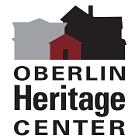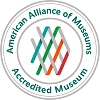Living Through History
Tuesday, June 11th, 2013
My name is Michelle Myers, and I am a summer intern at the Oberlin Heritage Center through the Leadership Lorain County Internship Program. This is my second summer here. I was born and raised in Elyria, and I am currently working on my bachelor’s degree in psychology at Swarthmore College. This is why I have come to the Heritage Center for my second summer: because I love learning about and talking to people.
History, as I have come to learn it, is not facts. History is stories. History is the light in someone’s eyes when they recall an event that made headlines. History is a grandfather telling his grandchildren about the war at a family event. The past is what connects us all together. It is all of our stories interwoven in a conversation where people recall the good old days, the not so good days, and feel less alone. History is not the history of individuals, but of a common humanity who has been through and seen it all. History is what makes us live forever.
This is why I love giving tours of the three buildings at the Oberlin Heritage Center. I love when a visitor recognizes an item in one of the historical houses and says, “My grandmother has one of those in her house.” Someone else says, “I used to use one of those when I was a kid.” Then a conversation starts. People talk to each other. A human connection is made. Meaning is made out of washboards and rug beaters.
When a woman and I talk about the hardships a mother with her child could have faced trying to find freedom from slavery, and the visitor is nodding her head, her eyes deeply concerned, I feel as if something beyond our words is being fulfilled. She understands what it means to work hard, to face destitution. Both women understand. It is all three of us in this conversation. We live through each other’s thoughts and words. This is what history looks like.
But history is also the amazement and hilarity that ensues when first graders realize what a chamber pot is. They get on their hands and knees on the wooden, creaky floors; look under the rope-wrung bed; see the white, shiny bowl; and cry “People would poop in that?!” Maybe they imagine a life, long before televisions and video games, without bathrooms. They have something to go home and tell their parents about. They gave me something to remember. They fill these buildings with laughter and excitement. They keep these buildings and the Oberlin Heritage Center alive. Thank you to all of you, past and present, who keep this place alive.








